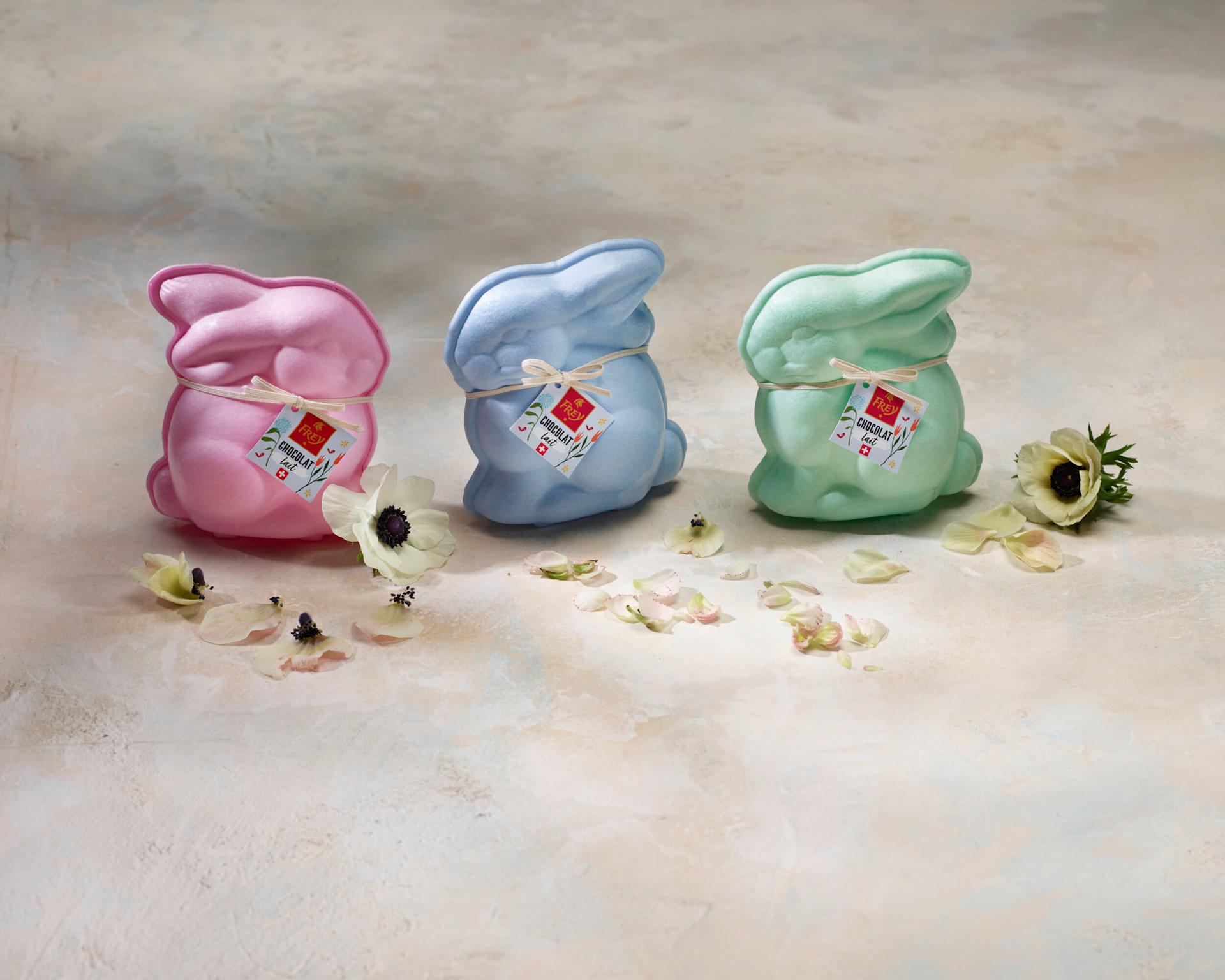
Food waste
Saving food and helping people
A visit to "Tischlein deck dich": members of the FMC Executive Board support the team on site.
navigation

Sustainable Easter
The packaging for Frey’s popular colourful Easter bunnies is now made from potatoes. Yes, you read that right. Read on to find out how this came about.
“We wanted to find a 100% recyclable alternative to the metallised PET shell, which can only be disposed of in household waste”, says Roger Zollinger, packaging specialist at Delica AG. In contrast, the new moulded fibre packaging goes into the cardboard collection. The chocolate bunny is the first Migros product in packaging of this kind.
It is made mainly from potato starch, a waste product generated during production of French fries. Additional starch comes from industrial potatoes. Added to this are paper fibres and water.
Of course. However, Migros customers would no longer be able to find the popular rabbits on the shelves. The characteristics would have been completely lost. We wanted to avoid that.
In contrast to table potatoes, industrial potatoes have a much higher starch content. They are not suitable for direct consumption. Their starch is used in soups and sauce thickeners, and also for the production of paper, cardboard and adhesives. And as you can see, now also for packaging.
Every raw material comes with its own baggage in terms of environmental impact. “We have taken a very important step in the right direction and turned non-recyclable packaging into recyclable packaging”, explains Zollinger.
Across all three Easter bunny sizes, 6,000 kilograms of plastic are saved.
It took about two years of intensive work. A creative team got to work at the beginning of 2020. After a long search for suppliers, production started at the end of 2022.
Depending on the size of the bunny, it gets between three and four stars. The packaging is recyclable and has a low environmental footprint, but it is rather heavy in relation to the weight of the chocolate. That’s why it doesn’t achieve five stars. However, the aim is to make the shell lighter.
“The packaging has to be safe in direct contact with the chocolate, which wasn’t easy. It was also tricky to find a supplier who could produce the mould. The closure was also a challenge; the shell halves have to fit together well and hold together”, explains Zollinger.
Discover exciting stories about all aspects of Migros, our commitment and the people behind it. We also provide practical advice for everyday life.